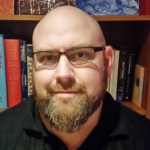- This topic has 2 replies, 2 voices, and was last updated 3 years, 1 month ago by
 Sawyer Ge.
Sawyer Ge.
-
AuthorPosts
-
-
May 17, 2022 at 5:55 pm #79841
Manjunatha N
MemberSir, I have few questions
1. How to calculate Full width at 1/e2 and half width both are related gausian source.
2. How to incrase the wavelength range while ploting the power spectrum of obsevation line.
3. Biosensor design and paper I have attached is already published, in that cavity region is created in that without sample (air) , with sample (C-cancer, N-without cancer) in each case refractive index is changed but wavelenth is not changed (shifted). -
May 17, 2022 at 6:51 pm #80729
 Scott NewmanModerator
Scott NewmanModeratorManjunatha,
I will do my best to answer your questions but a couple will need clarifications.
- The transverse (spatial) width is measured as Full width at 1/e^2. So if the peak of the Gaussian is at 1 then the width at an amplitude of 1/e^2 will be the full width as set in the transverse tab. The half-width has no meaning without an amplitude point to measure it in this context and the only place half-width is used is when defining a rectangular field not a Gaussian.
- The wavelength range and the resolution of the wavelength range are both specified in the “Spectrum” option within the “DFT Options” of your simulation parameter window. It must be set BEFORE a simulation runs as the observation line is performing cumulative DFT during the simulation so the entire time information is not being stored. As we do not keep the full time information you will not be able to recalculate the DFT after the simulation.
- I am not certain what you are saying or asking in this question. The paper you link discusses a resonator structure to minimize cross talk in waveguide intersections. It does not discuss shifting of the resonant peak with refractive index changes in the resonator. However, I can say that if you are changing the refractive index of the central hole to represent a sample or lack there of then you are changing the resonant cavity and will see a shift in the resonant peak. As the paper does not discuss resonant shifts, are you referring to your own simulations and are you saying that you are not seeing a shift?
Scott
-
May 17, 2022 at 6:51 pm #83333
 Scott NewmanModerator
Scott NewmanModeratorManjunatha,
I will do my best to answer your questions but a couple will need clarifications.
- The transverse (spatial) width is measured as Full width at 1/e^2. So if the peak of the Gaussian is at 1 then the width at an amplitude of 1/e^2 will be the full width as set in the transverse tab. The half-width has no meaning without an amplitude point to measure it in this context and the only place half-width is used is when defining a rectangular field not a Gaussian.
- The wavelength range and the resolution of the wavelength range are both specified in the “Spectrum” option within the “DFT Options” of your simulation parameter window. It must be set BEFORE a simulation runs as the observation line is performing cumulative DFT during the simulation so the entire time information is not being stored. As we do not keep the full time information you will not be able to recalculate the DFT after the simulation.
- I am not certain what you are saying or asking in this question. The paper you link discusses a resonator structure to minimize cross talk in waveguide intersections. It does not discuss shifting of the resonant peak with refractive index changes in the resonator. However, I can say that if you are changing the refractive index of the central hole to represent a sample or lack there of then you are changing the resonant cavity and will see a shift in the resonant peak. As the paper does not discuss resonant shifts, are you referring to your own simulations and are you saying that you are not seeing a shift?
Scott
-
May 19, 2022 at 10:18 am #80731
 Sarah HerlitzMember
Sarah HerlitzMemberSir thanks for your valuable reply,
1. Initially I was using 32-bit FDTD in that 2D transverse tab Half width is mentioned even for gaussian source, but now I am using 64-bit FDTD evaluation version.
2. I attached the updated design file, DFT option in the simulations and now I can vary the wavelength range.
3. In previous attachment contains design and previously published paper. In that paper design consists of two waveguides and one resonator (cavity/sensing region). First sio2 slab is created, then placed the silicon rods of placed by using PWE calculated band gap based on that radius= 0.2a, sensitive region radius is (> 0.2a) little higher than other silicon rods. Gaussian source with Sine-Modulated Gaussian Pulse is used and observation line is used. Procedure is based on previous published paper I am following to analyse the results. The sensitive region RI is changed based on the following three cases i) first air RI = 1, ii) Second Cancer cell RI (C) = 1.399, iii) Normal cell RI N = 1.385 used. Expected result from these three cases are to get different resonant peaks (by default resonant wavelength is also changes) for each case in power spectrum, if result is getting different peaks for each case, then the design is working properly. Still, I am facing problem of not shifting the resonant wavelength.
4. For Sine-Modulated Gaussian Pulse tab how to find Time Delay (Sec) and FWHM (Sec). -
May 19, 2022 at 10:18 am #83335
 Sarah HerlitzMember
Sarah HerlitzMemberSir thanks for your valuable reply,
1. Initially I was using 32-bit FDTD in that 2D transverse tab Half width is mentioned even for gaussian source, but now I am using 64-bit FDTD evaluation version.
2. I attached the updated design file, DFT option in the simulations and now I can vary the wavelength range.
3. In previous attachment contains design and previously published paper. In that paper design consists of two waveguides and one resonator (cavity/sensing region). First sio2 slab is created, then placed the silicon rods of placed by using PWE calculated band gap based on that radius= 0.2a, sensitive region radius is (> 0.2a) little higher than other silicon rods. Gaussian source with Sine-Modulated Gaussian Pulse is used and observation line is used. Procedure is based on previous published paper I am following to analyse the results. The sensitive region RI is changed based on the following three cases i) first air RI = 1, ii) Second Cancer cell RI (C) = 1.399, iii) Normal cell RI N = 1.385 used. Expected result from these three cases are to get different resonant peaks (by default resonant wavelength is also changes) for each case in power spectrum, if result is getting different peaks for each case, then the design is working properly. Still, I am facing problem of not shifting the resonant wavelength.
4. For Sine-Modulated Gaussian Pulse tab how to find Time Delay (Sec) and FWHM (Sec).
-
-
AuthorPosts
- You must be logged in to reply to this topic.

